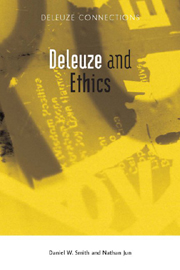14 results
Non-Aqueous Synthesis of Graphene Supported Spinel Ferrite Nanoparticles
-
- Journal:
- Microscopy and Microanalysis / Volume 25 / Issue S2 / August 2019
- Published online by Cambridge University Press:
- 05 August 2019, pp. 2252-2253
- Print publication:
- August 2019
-
- Article
-
- You have access
- Export citation
Effects of Virtual Reality Simulation on Worker Emergency Evacuation of Neonates
-
- Journal:
- Disaster Medicine and Public Health Preparedness / Volume 13 / Issue 2 / April 2019
- Published online by Cambridge University Press:
- 08 October 2018, pp. 301-308
-
- Article
- Export citation
A BAYESIAN ANALYSIS OF WEAK IDENTIFICATION IN STOCK PRICE DECOMPOSITIONS
-
- Journal:
- Macroeconomic Dynamics / Volume 19 / Issue 4 / June 2015
- Published online by Cambridge University Press:
- 07 January 2014, pp. 728-752
-
- Article
- Export citation
Thin Film Coil Design Considerations for Wireless Power Transfer in Flat Panel Display
-
- Journal:
- MRS Online Proceedings Library Archive / Volume 1388 / 2012
- Published online by Cambridge University Press:
- 25 April 2012, mrsf11-1388-f02-02
- Print publication:
- 2012
-
- Article
- Export citation
Acknowledgments
-
- Book:
- Deleuze and Ethics
- Published by:
- Edinburgh University Press
- Published online:
- 12 September 2012
- Print publication:
- 09 May 2011, pp vii-viii
-
- Chapter
- Export citation
Notes on Contributors
-
- Book:
- Deleuze and Ethics
- Published by:
- Edinburgh University Press
- Published online:
- 12 September 2012
- Print publication:
- 09 May 2011, pp 207-209
-
- Chapter
- Export citation
5 - Deleuze, Values, and Normativity
-
-
- Book:
- Deleuze and Ethics
- Published by:
- Edinburgh University Press
- Published online:
- 12 September 2012
- Print publication:
- 09 May 2011, pp 89-107
-
- Chapter
- Export citation
Introduction
-
-
- Book:
- Deleuze and Ethics
- Published by:
- Edinburgh University Press
- Published online:
- 12 September 2012
- Print publication:
- 09 May 2011, pp 1-4
-
- Chapter
- Export citation
Frontmatter
-
- Book:
- Deleuze and Ethics
- Published by:
- Edinburgh University Press
- Published online:
- 12 September 2012
- Print publication:
- 09 May 2011, pp i-iv
-
- Chapter
- Export citation
Contents
-
- Book:
- Deleuze and Ethics
- Published by:
- Edinburgh University Press
- Published online:
- 12 September 2012
- Print publication:
- 09 May 2011, pp v-vi
-
- Chapter
- Export citation
Index
-
- Book:
- Deleuze and Ethics
- Published by:
- Edinburgh University Press
- Published online:
- 12 September 2012
- Print publication:
- 09 May 2011, pp 210-222
-
- Chapter
- Export citation

Deleuze and Ethics
-
- Published by:
- Edinburgh University Press
- Published online:
- 12 September 2012
- Print publication:
- 09 May 2011
Angel Smith. Anarchism, Revolution and Reaction: Catalan Labor and the Crisis of the Spanish State, 1898–1923. New York: Berghahn Books, 2007. ISBN 978-1845451769, $89.95 (cloth).
-
- Journal:
- Enterprise & Society / Volume 11 / Issue 2 / June 2010
- Published online by Cambridge University Press:
- 18 February 2015, pp. 430-431
- Print publication:
- June 2010
-
- Article
- Export citation
Measurement of gravitational time delay using drag-free spacecraft and an optical clock
-
- Journal:
- Proceedings of the International Astronomical Union / Volume 5 / Issue S261 / April 2009
- Published online by Cambridge University Press:
- 06 January 2010, pp. 414-419
- Print publication:
- April 2009
-
- Article
-
- You have access
- Export citation




